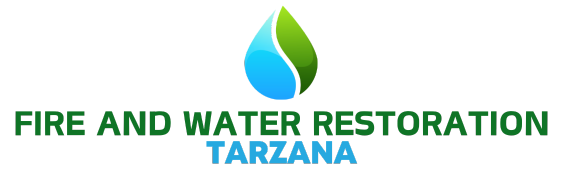When fire or water damage occurs, the aftermath can be chaotic and overwhelming. It’s easy to make hasty decisions that could lead to further complications, increased costs, and health risks. Properly handling the situation is crucial to ensuring a smooth recovery process. However, many people unknowingly make mistakes that can hinder restoration efforts and create long-term issues.
Avoiding these common mistakes can make all the difference in successfully restoring your home or business after a disaster.
Failing to Document the Damage Properly
One of the biggest mistakes homeowners make is not documenting the extent of the damage before starting the cleanup. Insurance claims often require thorough documentation, including photos and videos of the affected areas. Without proper records, proving the extent of your loss may become difficult, potentially leading to lower compensation from your insurance provider.
Take clear photos and videos from multiple angles, including close-ups of damaged furniture, walls, floors, and appliances. Keep a written inventory of damaged items and their estimated value. If possible, wait for an insurance adjuster to assess the damage before making any major repairs.
Attempting a DIY Cleanup Without Professional Help
While it may be tempting to handle the cleanup process yourself, fire and water damage restoration requires specialized knowledge and equipment. DIY efforts can often cause more harm than good, especially when dealing with hidden moisture, soot, smoke damage, or structural instability.
Professionals have the necessary tools and expertise to thoroughly dry, sanitize, and restore your property. They can also detect underlying issues that may not be visible to the untrained eye, preventing future problems such as mold growth or weakened structures.
Ignoring Potential Health Hazards
Fire and water damage introduce serious health risks that should not be overlooked. Water damage can lead to mold growth within 24 to 48 hours, causing respiratory issues and allergies. Fire damage, on the other hand, leaves behind toxic soot and smoke residue that can linger in the air and affect indoor air quality.
Even if the damage appears minimal, exposure to harmful contaminants can pose long-term health risks. Always wear protective gear when entering damaged areas, and consult professionals to ensure your home is properly cleaned and sanitized.
Delaying the Cleanup Process
Time is critical when dealing with fire or water damage. Delaying cleanup efforts can lead to further deterioration of your property. Water can seep into walls, flooring, and furniture, causing irreversible damage and mold growth. Smoke and soot can continue to corrode surfaces and materials long after the fire has been extinguished.
To prevent additional damage, begin the cleanup process as soon as it is safe to do so. If professionals are not immediately available, take temporary measures such as removing standing water, opening windows for ventilation, and covering exposed areas to prevent further contamination.
Not Shutting Off Utilities
Many people forget to shut off utilities after a fire or flood, which can lead to further damage and safety hazards. Water can compromise electrical systems, increasing the risk of electrocution or fire. Gas leaks can also pose serious threats if left unchecked.
As a precaution, turn off electricity, gas, and water supply lines if your property has suffered significant damage. If you’re unsure how to do this safely, contact utility providers or emergency professionals for assistance.
Using the Wrong Cleaning Products
Certain cleaning products can worsen fire and water damage instead of improving the situation. For example, using household cleaners on soot-covered surfaces can cause smearing, making the damage more difficult to remove. Similarly, using excessive water on certain materials can lead to deeper saturation and mold growth.
Always consult a professional before applying any cleaning solution to damaged areas. Specialized products and techniques are often needed to effectively restore different surfaces without causing further harm.
Neglecting to Secure the Property
After a disaster, your home or business may be vulnerable to theft, vandalism, or further weather-related damage. Failing to secure the property can lead to additional losses and liability issues.
To protect your property, board up broken windows, lock all doors, and cover exposed areas with tarps or plastic sheeting. If necessary, consider hiring security services to monitor the site until repairs are complete.
Overlooking Insurance Coverage Details
Many homeowners assume their insurance policy covers all types of fire and water damage, only to discover gaps in coverage when filing a claim. Failing to review your policy details can lead to unexpected out-of-pocket expenses.
Before making assumptions, contact your insurance provider to clarify what is covered under your policy. Keep records of all communication, including emails and phone calls, and ask for written confirmation of coverage terms. Understanding your policy can help you maximize your claim and avoid financial surprises.
Not Keeping Receipts and Documentation for Expenses
Throughout the restoration process, you may need to purchase temporary lodging, replacement items, or professional services. Many insurance policies offer reimbursement for these expenses, but only if you provide proper documentation.
Keep all receipts, invoices, and records of payments made during the recovery process. Organizing these documents will not only help with insurance claims but also serve as proof of expenses for potential tax deductions or financial assistance programs.
Recovering from fire or water damage requires careful planning and informed decision-making. By avoiding these common mistakes, you can prevent additional damage, reduce costs, and ensure a safer, more efficient restoration process. When in doubt, seek professional help to ensure your home or business is properly restored.
